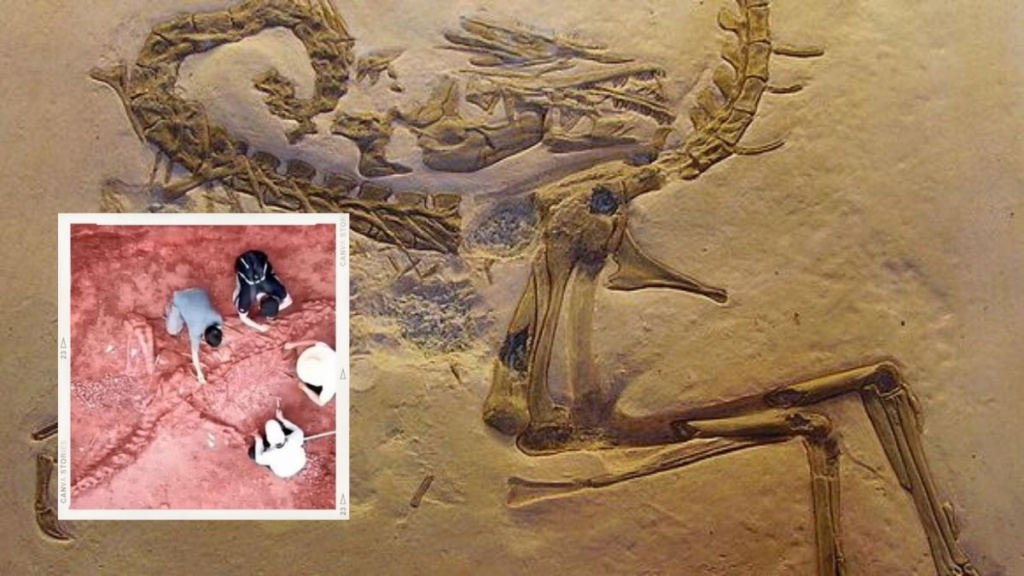A nearly complete dinosaur fossil dating back 125 million years has been discovered
Chinese archaeological researchers from the Natural History Museum of Bayanur City have unearthed a near-complete dinosaur fossil dating back to about 125 million years ago in north China's Inner Mongolia Autonomous Region, during a regular inspection in the Banner Orad background, the area called the hometown. Dinosaur head in China.
A preliminary study of bone morphology showed that the fossil belonged to Iguanodon of the early Cretaceous period. From the museum, Dai Ruiming said that the discovered dinosaur was large and close to adulthood.
It is noteworthy that the Cretaceous period began 137 million years ago and ended 65 million years ago, and that was the last time that dinosaurs dominated the planet. Excavations from that period provide important evidence for the study of their evolution, living conditions, and extinction.
The researchers are now cleaning and enhancing the unearthed giant dinosaur skeleton, while the fossilized bones will be returned for further study if they belong to an individual dinosaur.
Protection measures will also be taken based on the number of fossils they find. If a lot of well-preserved fossils are discovered, Day said, researchers could consider building a burial museum at the site for protection.
So far, fossils of 19 types of dinosaurs have been found there, and the fossils are a mirror that reflects the events and details of prehistoric times.
Perhaps the strangest of these fossils is one that dates back to 95 million years ago in an area that is now Australia. One of these discovered fossils tells us the story of a huge crocodile ancestor, which seized its prey, which was a small dinosaur, and pounced on it with its powerful jaws to swallow it almost entirely in one huge bite, but This crocodile died shortly after, and his remains, including his last meal, are preserved to this day.
“It is likely that dinosaurs were an essential part of the food pyramid in the Cretaceous period, but due to the lack of fossils to compare them with, this famous prehistoric crocodile and its last meal will continue to provide us with evidence of animal behavior and relationships,” explains Matt White, study leader and researcher from the Australian Dinosaur Museum. that inhabited Australia millions of years ago.
source:Websites



